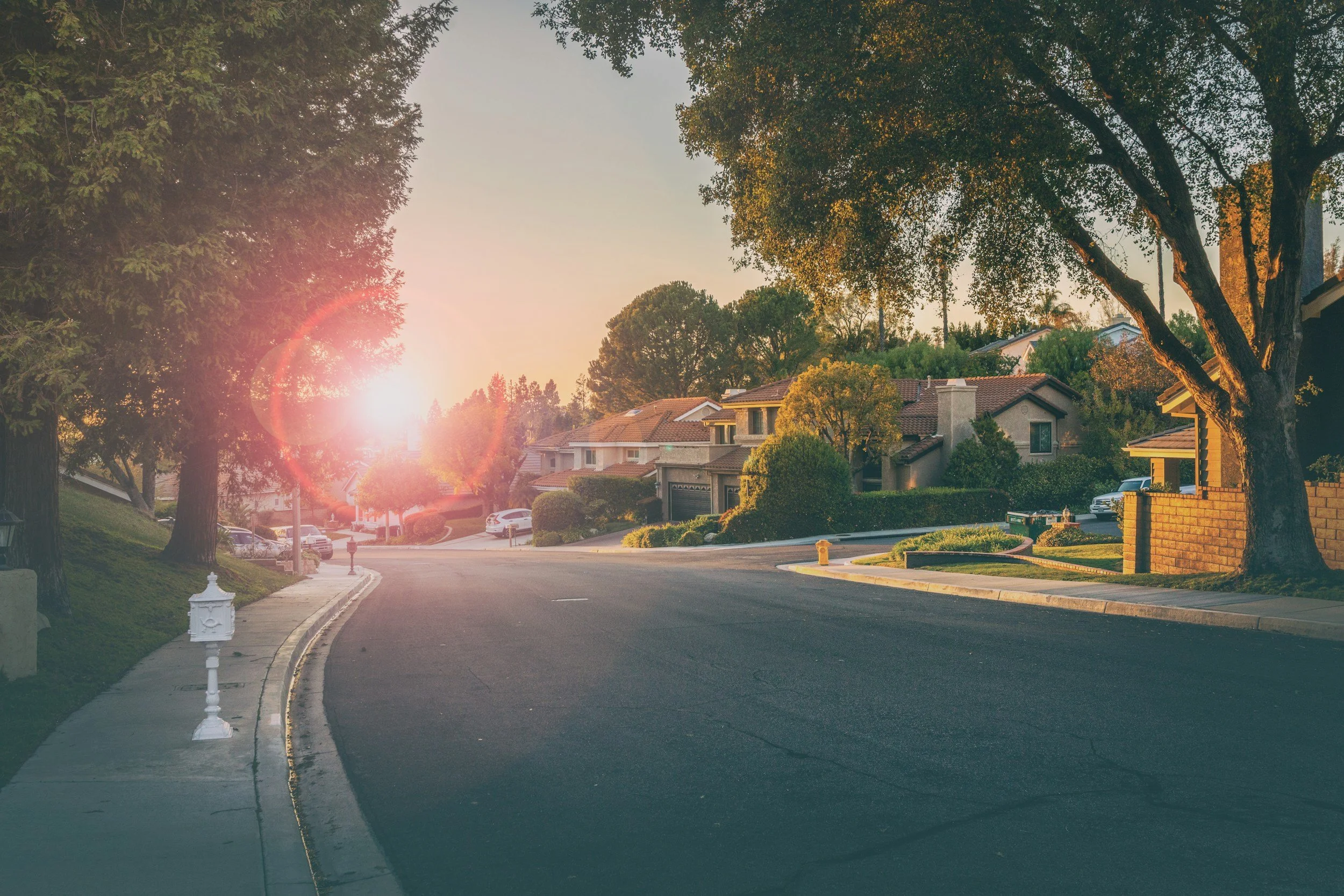The Unspoken Curb Appeal: Why a Home’s “Feel” Starts Before You Step Inside
There’s a lot to be said about the feel of a property — that intangible first impression buyers experience the moment they pull into a neighborhood. It’s something they can’t always put into words, but it’s very real. Part of my job as a Realtor is to help clients understand why they’re feeling a certain way about a home or neighborhood — because those feelings often tell the story long before the showing even begins.
The Neighborhood Vibe
It starts with the approach. The width of the streets, the presence of sidewalks, the placement of homes — all of these details shape the first impression.
Street width: Too narrow, and it can feel cramped and congested. Too wide, and it starts to feel stark and cold, almost commercial.
Mature trees: These add instant warmth and personality. Neighborhoods with thriving trees feel established and inviting — not sterile or “freshly built.”
Cars on the street: A lot of parked cars can indicate a high-rental area. Whether that’s a dealbreaker or not, it’s something to consider because it impacts both how the neighborhood feels and how it ages over time.
Setbacks and landscaping: How far homes sit from the sidewalk, whether there’s greenery between the street and homes, and how well those plants are maintained all play into that subconscious “comfort” factor.
In newer neighborhoods, these clues are still forming. Everything looks pristine, but it can be hard to tell how the area will age. In slightly older developments, it’s worth noticing — are the trees still alive? Is the landscaping thriving? If not, that can raise questions about the HOA or metro district’s maintenance practices.
The Curb Appeal Factor
Once you arrive at the property itself, curb appeal becomes the emotional handshake of the home.
Fresh paint and pretty trim help, but curb appeal is about more than cosmetics. It’s about condition and cohesion — is the concrete in good shape? Are the flower beds well-kept? Do the home’s features look intentional or pieced together? These details might seem minor, but together they create that elusive “this feels right” sensation.
Outdoor Living = Emotional Connection
In Colorado, outdoor living is a huge part of how we experience home. With sunny 60° days even in February, our patios and yards aren’t just extras — they’re extensions of our living spaces.
Yet many sellers assume leaving the yard blank helps buyers “see the potential.” The truth is, people connect emotionally when they can see how a space could live. Designated hangout zones, layered textures like flagstone, mulch, and shrubs, and pops of color through planters or flowers go a long way.
A few subtle upgrades can completely shift how a yard feels:
Add privacy through trees or shrubs.
Create cozy, defined spaces for relaxing or entertaining.
Include mixed materials to add depth and interest.
Even the elevation of a space matters. A deck that sits high above the yard — requiring several steps down — can feel disconnected. When outdoor spaces are on the same level, they feel more inviting and usable, which directly affects how buyers emotionally connect with the home.
The Psychology of “Feel”
At the end of the day, most buyers don’t walk away saying, “I didn’t like the setbacks” or “the street was too wide.” They just say, “It didn’t feel right.” That’s the power of the subconscious cues we absorb from the exterior — cues that tell us whether a place feels warm, livable, and like home.
Helping clients recognize these patterns is one of my favorite parts of what I do — because once you understand the why behind a feeling, you’re one step closer to finding the right fit.

